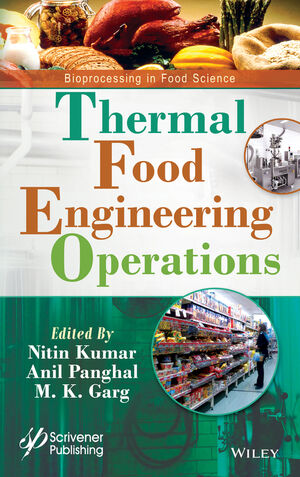Plant Renovations
Preparation is paramount
Regulations and competition are getting tougher, and companies are building to secure their futures.

A M King installed insulated metal panels on the walls and ceiling of a food processing facility in Charlotte, NC. Source: A M King.

The SaniCrete SL floor system with SaniCoat 200 sealcoat was installed in an 80,000-sq.-ft. dairy warehouse in Coopersville, MI. Source: SaniCrete.


Food and beverage processors have different reasons to renovate, such as meeting company specs or FSMA or GFSI requirements.
“Whether a plant is converting non-food space into food-safe space or upgrading to comply with today’s regulatory environment, many of the design features are the same,” says Ray Anater of Webber/Smith Associates. Of course, the renovation should be based on a carefully crafted strategy. For instance, isolation is hugely important before, during and after the project.
The 1998 Ball Park Franks Listeriosis outbreak that resulted in deaths and a major recall is an example of a serious isolation failure. “One theory links the contamination of the hot dogs with the replacement of a refrigeration unit located above the production line,” says Paul Medeiros, NSF/GFTC managing director, consulting and technical services, North America. “Removing and then replacing the refrigeration unit may have dislodged Listeria organisms from the ceiling, which eventually made their way down to the finished product.”
Medeiros also recalls a renovation project at a large Canadian university that didn’t take into account how the construction activity would disturb the existing rodent population. “As soon as work started, the rodents escaped to the foodservice areas,” he says. “The problem could have been avoided during the planning process by bringing in pest experts and implementing intensified pest monitoring and control activities.”
Getting started
Medeiros says you can gauge the competency of contractors by the questions they ask. “Your contractors should ask about things like applicable government licensing. For instance, will the facility be federally licensed? What product requirements are there in regard to temperature, humidity and other factors? What are the expected or existing food safety certifications such as BRC and SQF? If you’re not asked these types of questions, find another contractor.”
According to Anater, your budget should be based on sound design documents so there are no surprises when the final contract documents are delivered. “A wide range of agreements is possible, from guaranteed maximum price [with or without shared savings] to cost-plus/open book,” he says. “Consequently, it’s always best to consult with an experienced construction attorney before deciding upon the contract for a particular job.”
“Will the facility be federally licensed? What product requirements are there in regard to temperature, humidity and other factors? What are the expected or existing food safety certifications such as BRC and SQF? If you’re not asked these types of questions, find another contractor.”
Chris Harmon, senior vice president and project manager for Hixson Architecture and Engineering, says it’s also important to be certain the project is appropriately funded. “You need an adequate budget going in and people involved in the project who have a good understanding of construction costs.”
Seamless Integration
Twelve years ago, Meijer Purple Cow Dairy in Holland, MI was concerned that the delamination of its cooler’s seamless flooring could result in voids, leading to bacterial growth, production issues and safety violations. Its flooring supplier had patched the 5,000-sq.-ft. floor time and again, but it continued to fail, resulting in water being trapped between the concrete subfloor and the deteriorating polyurea.
Meijer Purple Cow wanted a floor that could stand up to the special demands of a dairy. It chose a 3/8-inch SaniCrete HF flooring system. The installation took a mere 36 hours.
“SaniCrete sets up and is ready for use in 12 hours,” explains SaniCrete Operations Supervisor David Elliott. His crew worked from 6 o’clock on a Saturday morning through 11 p.m. that Sunday, allowing the dairy to resume operations the next morning without missing a beat.
Meijer Purple Cow Dairy Plant Manager Don Scholten says after 12 years the new floor is performing as well as the day it was installed. “No downtime means my plant is more productive, and we are not losing money on reinstalling an inferior infrastructure.”
However, budgeting can be tricky. For example, if you’re replacing an existing floor, it’s not hard to estimate the basic flooring cost per square foot. But, if you’re not careful, you may overlook costs for multiple mobilizations, over-time pay, getting materials in and out of the work zone, temporary partitions, etc.
“It’s also vital to establish competitive cost-plus markups on added scope and changes from a contractual point of view, as well as agreed-upon labor rates. If there is a scope addition, this will help you confirm you’re getting a fair price,” offers Harmon. “Plus, it’s a good idea is to hire an advocate to conduct reviews of change orders. The money spent to have that resource in place often more than pays for itself.”
According to Todd Reed, principal of engineering, consulting and design service firm Stantec, processors should:
- Clarify expectations early, and focus their time and money on pre-engineering, which will save many hours of detail design later on.
- Complete a balanced process flow diagram to prevent oversizing and/or undersizing equipment.
- Prepare a pipeline and instrumentation diagram for all process utilities to eliminate possible mistakes, contractor rework and systems that may not support the facility’s demands.
Areas for saving energy
During the planning and budgeting process, you should always consider the energy usage implications of your project. Harmon recommends starting with an audit of steam, processing, refrigeration, compressed air, wastewater, electric, water and HVAC requirements.
Choosing the right doors is crucial as well. “High-speed automatic doors with sensors help preserve cool conditions and reduce pest penetration,” says George Lehnerer, project manager at A M King.
Managing scope creep
Uncontrolled project changes are potential issues for any renovation process, says Chris Harmon of Hixson. To combat scope creep, Harmon recommends keeping the following points in mind:
- Ensure all necessary stakeholders have a seat at the table. It’s important to have input from every group involved in your processes, including production line workers and members of departments such as finance, marketing, QC, R&D and sales.
- Experience matters. Project team members, including facility personnel and partners, such as the A/E firm, contractors and subcontractors, have a good deal of experience with renovations and are better prepared to keep scope creep at bay than those with less experience.
- Communicate! Have a plan in place to relate all issues, changes and other project details to all parties on a regular basis.
- Manage the capital approval process appropriately. As the project moves forward and gaps are identified, be prepared to clearly delineate the changes to capital approval stakeholders.
“Personnel doors usually do not have automatic closers,” says Anater, “but motorized doors intended for forklift and pallet traffic do, and they can be set to close after a predetermined delay. Air curtains also minimize open time and provide good isolation while the doors are open.”
Lehnerer stresses the importance of good space management. He recalls a client that wanted to convert a building with 30-ft. ceilings into a food-grade processing facility. “We discovered 15-ft. ceilings would work just as well, and that lowering the existing ceilings would substantially reduce heating and cooling costs.”
What’s underfoot
Changing a facility’s flooring can also bring big benefits. Some food processors are moving to resinous polyurethane, which is completely nonporous and has no cracks or grout lines where dirt and bacteria can hide. Medeiros says surfaces such as floors must be smooth, drainable and easily cleanable. “These characteristics promote proper sanitation and pest control,” he adds.
“Polyurethane flooring is typically poured up to 3/8-inches thick on top of concrete and then allowed to cure,” explains David Senn, Stonhard global accounts manager. “When installed across two different areas, such as an existing plant and a new extension, a minimum 1-inch deep chase should be cut into the concrete and filled to ensure thickness and strength. But, feathering the edges should be avoided since this can create a weak point in the flooring and cause cracks and chips to form.” He also notes all moving joints should be saw cut and filled with an elastomeric material to allow for building movement.
SaniCrete (Farmington Hill, MI) provides the STX flooring system, which incorporates a “twisted” stainless steel fiber that reinforces and locks it together. With the system, cracks are prevented, and post-crack strength is improved. SaniCrete also offers the SaniCurb advanced in-plant wall protection system. Prefabricated and modular, the system is composed of a high-density, energy-absorbing, expanded polypropylene encapsulated in an outer shell of a crack- and chip-resistant polyaspartic coating. “The system is nonporous, so it doesn’t harbor bacteria or pathogens, and it protects interior walls and other areas from forklifts and other vehicles,” says SaniCrete President Keith Kwasny.
Walls and partitions are other vital parts of a plant renovation. Insulated metal panels (IMPs), coupled with proper airflow and pressures, help ensure nothing airborne crosses into the food processing room and prevent the formation of condensation, another well-known source of bacterial growth.
Renovating a plant to food-grade standards is no simple matter. And, in the current environment of increasing rules and customer expectations, food and beverage processors must properly navigate the renovation road so that they will be here today and not gone tomorrow.
For more information:
Ray Anater, Webber/Smith Associates, 717-625-4180,
ranater@webbersmith.com, www.webbersmith.com
Paul Medeiros, NSF/GFTC, 519-821-1246 ext. 5023,
pmedeiros@nsf.org, www.gftc.ca
Chris Harmon, Hixson Architecture and Engineering, 513-241-1230,
charmon@hixson-inc.com, www.hixson-inc.com
George Lehnerer, A M King; 704-365-3160,
glehnerer@amkinggroup.com, www.amkinggroup.com
David Senn, Stonhard, 856-321-7538,
dsenn@stonhard.com, www.stonhard.ca
Keith Kwasny, SaniCrete, 248-893-1000,
keith@sanicrete.com, www.sanicrete.com
Todd Reed, Stantec, 559-492-4177,
todd.reed@stantec.com, www.stantec.com
Looking for a reprint of this article?
From high-res PDFs to custom plaques, order your copy today!












